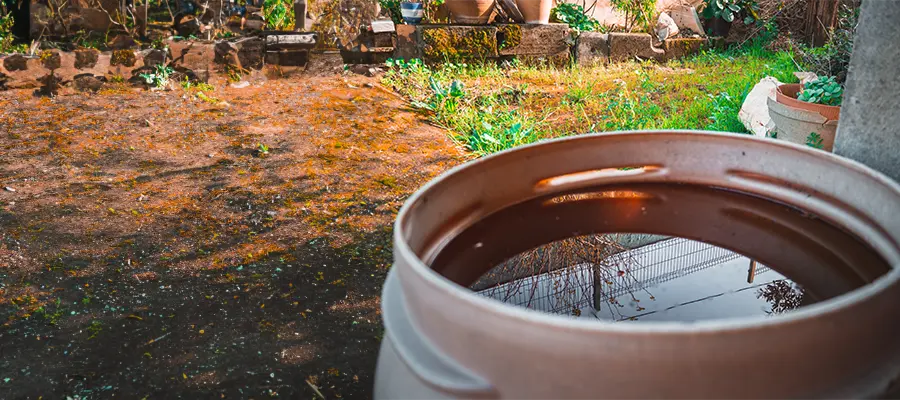Water shortages and environmental damage are developing day by day. It’s very important to do things that might be good for the surroundings, like collecting rainwater. Many people use present water sources, but we must look into other ways to save water due to the changing weather and increasing population. An innovative concept that is gaining popularity is rainwater harvesting. This helps conserve water resources by reducing their usage, resulting in numerous ecological and economic advantages.
What is Rain Water Harvesting?
Rainwater harvesting is the simple process of collecting and storing rainwater for future use. It is a practical and straightforward solution. Rainwater collected from rooftops, sidewalks, and other surfaces is directed into storage tanks or reservoirs through modern rainwater gathering systems. Here, it can be treated and used for various purposes, significantly impacting our water consumption.
Why Do We Harvest Rainwater?
The best and most long-lasting way to collect and store rainwater is through rainwater harvesting. It can be used for many things, like watering plants, cleaning, gardening, and getting ready for an emergency. In this blog, Brick & Bolt will talk about the most important ways to collect rainwater in a way that is both safe and effective.
How To Harvest the RainWater?
Rainwater harvesting is a powerful and sustainable way to collect and store rainwater. It can be used for many purposes, including irrigation, housekeeping, landscaping and emergency preparedness. It consists of the following components:
1. Evaluating Your Needs and Resources
Before installing a rainwater harvesting system, it is important to consider your water needs and resources. Consider things like:
- The amount of rainfall your region receives
- Where rainwater can be collected (e.g., roofs, driveways).
- Intended use for harvested rainwater
2. Choosing the Right Collection

Typical sources of rainwater harvesting are roofs, driveways, and other surfaces. Consider the following points when selecting the materials.
- Choose a surface made of non-toxic materials to avoid corrosion of harvested rainwater.
- To maintain water quality, be sure to keep surfaces clean of waste and dirt.
3. Install Gutters and Downspouts
Gutters and drains are important parts of a rainwater harvesting system, as rainwater is collected from the roof and transferred to cisterns or barrels. Follow these tips for installing drains.
- Install gutters and downspouts to improve rainwater harvesting.
- Install leaf fences and screens to prevent debris from entering the system.
4. Selection of Containers or Barrels
Pick the right container or barrel for storage based on how much room you have. When picking out a storage container, think about the following things.
- Capacity: Determine how much rainwater you need based on your use and the amount of rain that falls in your area.
- Material: Choose a tank or bucket made of strong, food-safe materials like polyethylene or fibreglass.
5. Judicious Use of Harvested Rainwater
After collecting rainwater, it’s important to use it smart and usefully. These tips will help you get the most out of rainwater.
- You can use rainwater for more than just drinking. For example, you can water plants, do farming, and flush the toilet with it.
- You might want to get a pump so that you can use the water from the rain in different parts of your land.
- Keep an eye on how much water is being used and change the gathering capacity to fit your needs.
Environmental Benefits of Rainwater Harvesting?
Saving potable water: Collecting rainwater for non-potable uses like gardening, flushing the toilet, and washing reduces the need for treated potable water, which keeps this valuable resource available for important uses.
Less runoff and sediment: Collecting rainwater helps lower the risk of flooding, land erosion, and runoff in cities. This is good for the water and nature in the area because it keeps living things healthy by keeping pollution out of rivers and streams.
Groundwater recharge: Harvesting rainwater by allowing it to sink instead of escape helps replenish stored groundwater, which is essential for agricultural, industrial, and domestic water flow.
The Economic Benefits of Rainwater Harvesting
Cost Savings: Collecting rainwater can help people and cities save a lot of money by lowering their reliance on city water sources and the utility costs that come with using water.
Putting money into infrastructure: Spending money on rainwater collection systems will save you money in the long run because you won’t have to make pricey changes to the systems that make and deliver water to meet demand.
Climate Resilience: Rainwater collection can help fight floods in places where they happen often because it provides a steady supply of water when other sources are limited or not available.
Engaging the community: Collecting rainwater through projects can encourage people, companies, and local governments to work together to protect water and make the area more sustainable.
Educational opportunities: Putting in place programs to collect rainwater can help schools, universities, and community groups teach people about how to save water and take care of Mother Earth.
By collecting rainwater, we can save water without harming the earth and become less reliant on traditional water sources. By using these methods and tips, you can set up and take care of a rainwater collection system that gives you a steady supply of water for many uses and helps your community save water. Rainwater collection is a useful way to make the future more sustainable for future generations, whether you’re a homeowner or a business owner.

